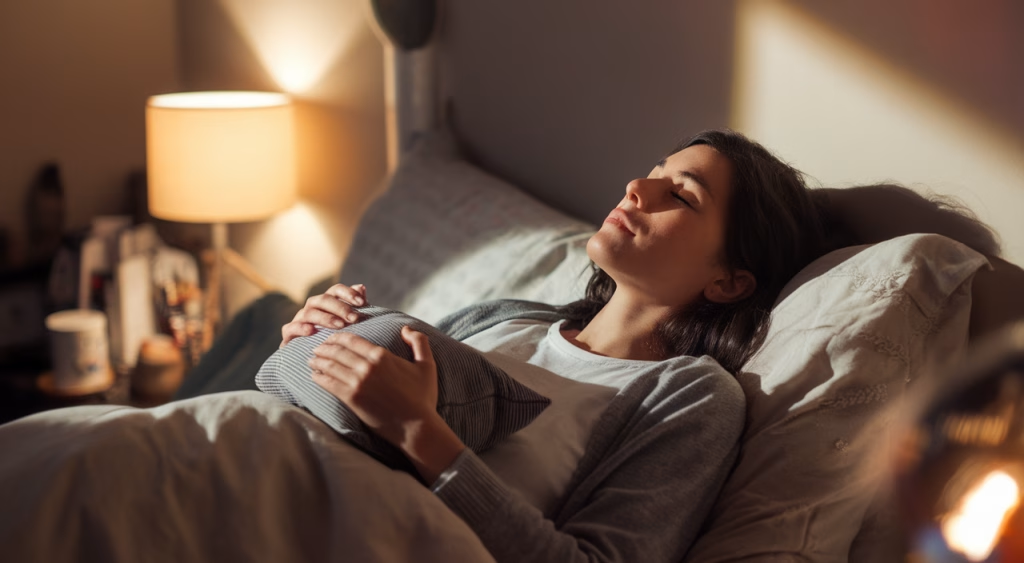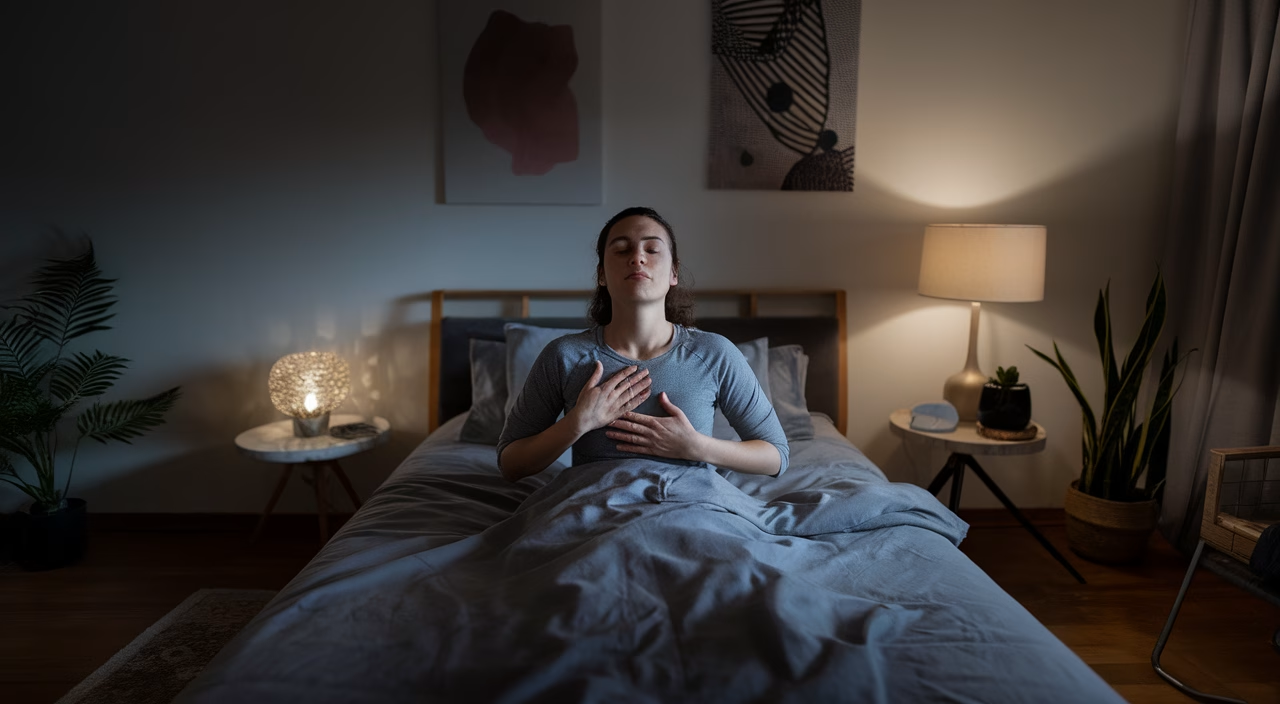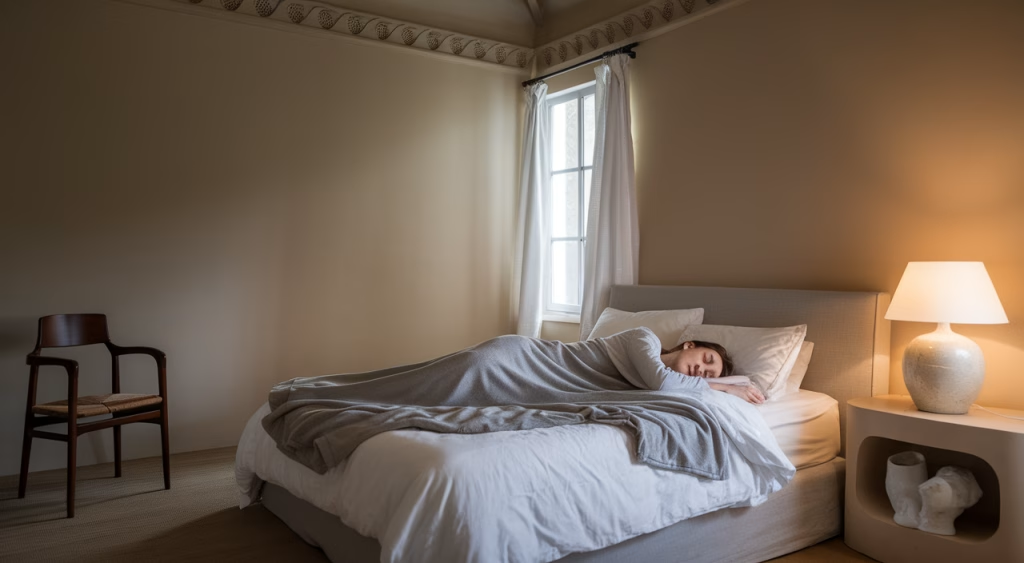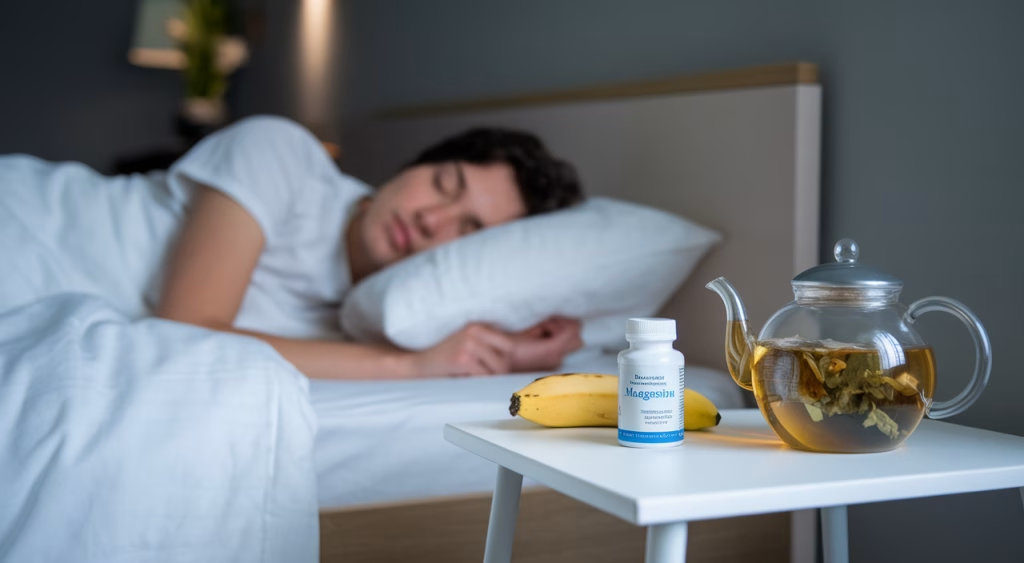What is the most effective breathing technique for better sleep?
The combination of nasal breathing and diaphragmatic breathing activates your parasympathetic nervous system, triggering the body’s relaxation response. This allows you to fall asleep faster, sleep deeper, and wake up feeling more refreshed.
TL;DR: Summary
- Breathing for better sleep relies on nasal and diaphragmatic breathing to calm the nervous system.
- Deep breathing exercises for improved sleep quality reduce anxiety, lower cortisol levels, and help initiate the relaxation response.
- Daytime breathing habits directly influence your sleep quality and stress resilience at night.
- Relaxation response through proper breathing can help address common sleep issues including insomnia, racing thoughts, and shallow sleep.
- Implement a nightly breathing routine with simple, guided steps to improve consistency and results.
Introduction to Breathing Techniques for Better Sleep
Ever woken up feeling like you barely slept—even after eight hours in bed? Or tossed and turned with your brain stuck in overdrive while your body’s begging for rest? If so, you’re not alone—and the way you breathe might hold the answers.
Most of us go through our days taking shallow, hurried breaths—and we carry that same unhelpful pattern into bedtime. But with just a few intentional changes, breathing for better sleep can become your most natural, accessible sleep aid.
In this guide, we’ll explore deep breathing exercises for improved sleep quality, share real-life implementation strategies, and outline nighttime breathing routines that actually work. We’ll show you how nasal breathing and diaphragmatic breathing can trigger the relaxation response through proper breathing—and they’re simpler than you think.
Benefits of Using Nasal Breathing for Improved Sleep Quality
Let’s start with the basics: why does nasal breathing matter for your sleep quality? Most of us default to mouth breathing, especially when we’re anxious—or even when we’re lying down. But nasal breathing is your body’s designed way of managing breath for optimal rest.
When you practice nasal breathing, it filters, warms, and humidifies the air, preparing it for your lungs. More importantly, it promotes the production of nitric oxide—a molecule that dilates blood vessels, improves oxygen flow, and activates the parasympathetic nervous system (your rest-and-digest system).
How Diaphragmatic Breathing Affects Relaxation
Your diaphragm is a large, dome-shaped muscle located just below your lungs. When you practice diaphragmatic breathing (also called belly breathing), you draw air deep into your lungs rather than just your chest. This deep breathing technique triggers your body’s natural relaxation response, which:
- Lowers heart rate and blood pressure
- Reduces levels of cortisol (the stress hormone)
- Signals to your brain that it’s safe to rest
Think of diaphragmatic breathing as pressing your body’s internal snooze button. You’re not just slowing down your breath—you’re activating proper breathing patterns that slow down your entire system for better sleep quality.
Practical Strategies and Exercises for Deep Breathing at Night
Now that you understand the what and why, let’s focus on the how. Here are three effective deep breathing exercises for improved sleep quality that you can try tonight to experience the relaxation response through proper breathing.
Step-by-Step Guide to Implementing Breathing Techniques
- 4-7-8 Breathing (Best for Calming Racing Thoughts)
How to do it:- Inhale through your nose for a count of 4
- Hold your breath for a count of 7
- Exhale slowly through the mouth for a count of 8
- Repeat for four cycles
- Box Breathing (Enhances Focus & Calm)
How to do it:- Inhale for 4 seconds using nasal breathing
- Hold for 4 seconds
- Exhale for 4 seconds
- Hold for 4 seconds
- Repeat for four to six cycles
- Diaphragmatic Belly Breathing (Eases Body Tension)
How to do it:- Lie flat with one hand on your chest and one on your belly
- Inhale deeply through the nose, aiming to raise your belly hand more than your chest hand
- Exhale slowly, feeling your belly fall
- Continue for 5–10 minutes before bed
In practice, try different options and notice your body’s response. Each technique engages the relaxation response through proper breathing. Some people respond quickly to 4-7-8 breathing, while others need extended diaphragmatic breathing to achieve optimal sleep quality.
Incorporating Breathing Routines into Your Nightly Sleep Routine
Consistency counts more than complexity when it comes to breathing for better sleep. Think of your breathing routine like brushing your teeth—simple, habitual, and effective. Building deep breathing exercises into your nightly flow helps teach your body that sleep is near.
Tips for Consistent Relaxation Response Before Bed
- Pair it with a trigger habit – Add your deep breathing exercises after something you already do—like after brushing your teeth or plugging in your phone.
- Keep lights low – Dim lighting helps deepen the signals to your brain that it’s time for rest, complementing the relaxation response from proper breathing.
- Use gentle sound cues – Try white noise or soft music as a timer. One song equals one breathing for better sleep session.
- Review your day, then release it – Finish your breathwork with a mental “let go” by imagining your worries floating away on each exhale through nasal breathing.
- Practice during the day – Your daytime breathing habits shape your nighttime sleep quality. Practice diaphragmatic breathing when commuting, walking, or during breaks to reinforce proper breathing patterns.
Cost Guide: Breathing Tools and Sleep Resources
| Tool or Program | Low-End | Mid-Range | High-End |
|---|---|---|---|
| Breathing Apps | Free | $5–$10/month | $50/year |
| In-person Breath Coaching | $30/session | $60–$100/session | $200+ packages |
| Sleep-focused Yoga/Breath Classes | Online Free | $10/class | $100 subscription |
| Guided Audio Downloads | Free | $5–$15 | $25+ |
Frequently Asked Questions
Can breathing exercises replace sleep aids like melatonin?
While not a medication replacement for everyone, deep breathing exercises for improved sleep quality support natural melatonin release and can reduce dependency on sleep aids over time through the relaxation response.
How soon will I notice results from nightly breathing?
Many people report feeling calmer after the first session of proper breathing, but consistent practice of nasal breathing and diaphragmatic breathing (at least 7–14 days) creates the most lasting improvements in sleep quality.
What if I wake up in the middle of the night?
Deep breathing techniques like 4-7-8 can help you fall back asleep faster by activating the relaxation response and settling your nervous system more quickly than tossing and turning.
Is mouth breathing at night a bad thing?
Mouth breathing may indicate nasal blockage or poor daytime breathing habits. Transitioning to nasal breathing during sleep can improve oxygenation and sleep quality significantly.
Can daytime breathing habits really affect my sleep?
Absolutely. Carrying stress all day through shallow breathing primes your system for alertness—even at night. Training your breath with proper breathing techniques during the day supports the relaxation response later on.
Is there a best time to do breathing exercises?
Practicing breathing for better sleep 30–60 minutes before bedtime signals your body it’s time to unwind. However, any time that fits your schedule consistently will improve your overall sleep quality.
Do I need special tools or training?
Not at all. Just your breath and a few quiet minutes are all you need to begin deep breathing exercises for improved sleep quality. Optional tools like apps or audio guides can enhance the experience but aren’t essential for achieving the relaxation response through proper breathing.





